Carrara marble sits in a class of its own. Quarried in the Apuan Alps of Tuscany for over two millennia, it supplied imperial Rome, fuelled Renaissance sculpture and still anchors high-end homes today.
This guide covers its origin story, key properties, care, then practical ideas for using it in today’s rooms. Along the way you’ll find sourced detail so you can plan confidently.
1- Where Carrara marble comes from
Carrara is extracted from a belt of quarries above the towns of Carrara and Massa in northern Tuscany. The mountains you see are not snowcapped. They are stepped faces of white stone opened over centuries. These quarries have been active since antiquity and remain the main source for the stone known around the world as Carrara.
Ancient writers used the name “Luna marble” because blocks shipped out from the Roman port of Luni. Major monuments prove its reach. The shaft of Trajan’s Column in Rome was stacked from colossal drums of Carrara. The Romans moved these blocks by crane towers and capstans and set a spiral stair inside the column. During the Renaissance, Michelangelo selected blocks from Carrara. Records place him favouring the Polvaccio area of the Torano basin for statue stone.
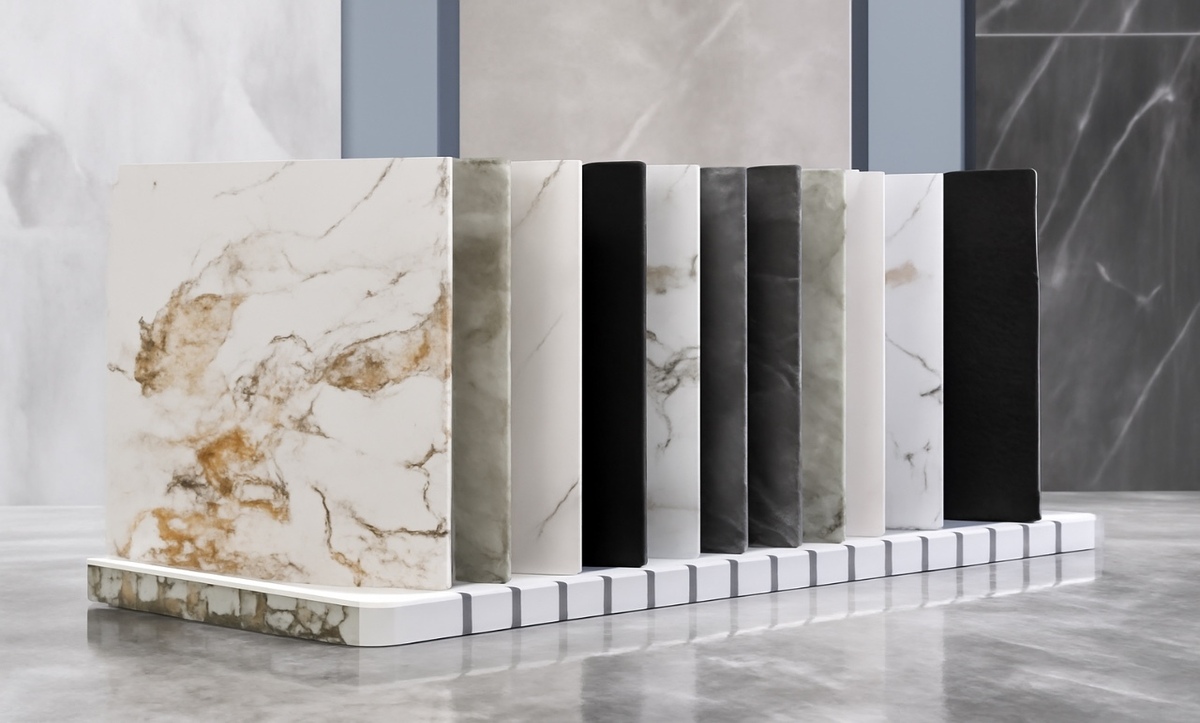
2- What Carrara marble is made of
Geologically, marble is metamorphosed limestone. Carrara’s white and gray varieties are mostly calcite, which gives the stone its soft light diffusion and the potential to etch when acids contact the surface. Typical density ranges about 2.6 to 2.8 g/cm³ and compressive strength often falls in the 50 to 100 MPa band, which is stronger than many concretes, though performance varies with grain size and veining.
Researchers have even named minerals after the district. Carraraite and zaccagnaite were identified in quarry veins, a reminder that these mountains are a living geological lab as well as an industrial site.
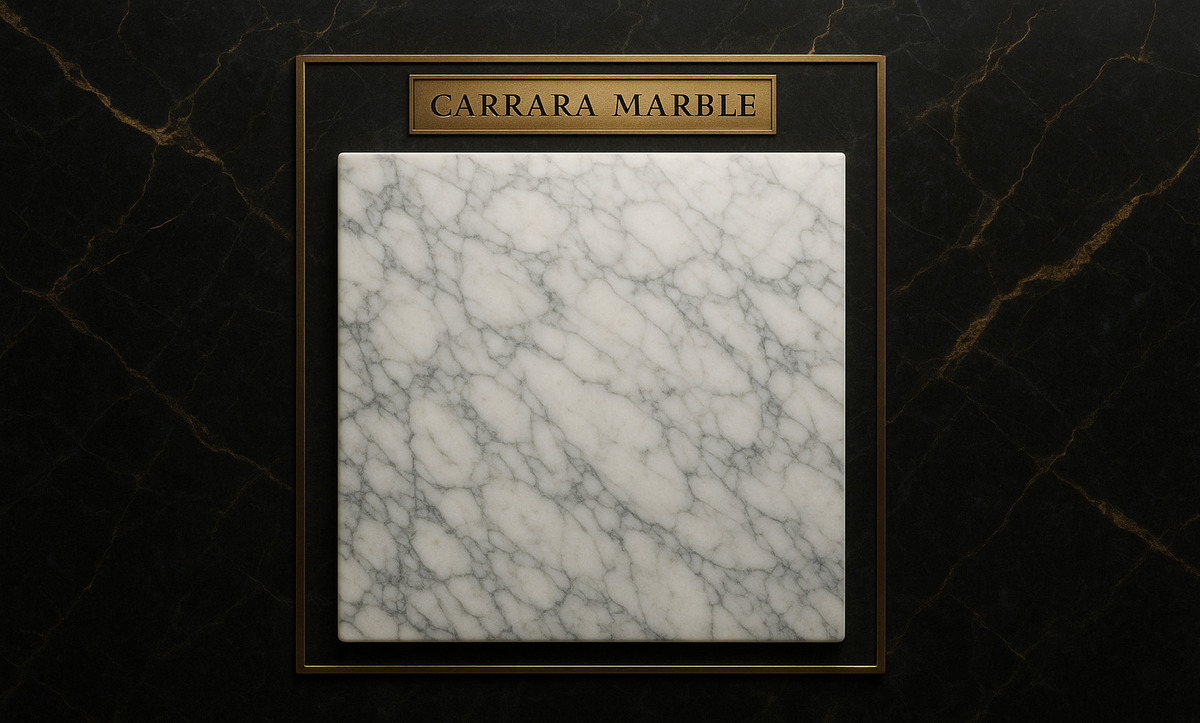
3- Visual character and common varieties
What most people call “Carrara” in slabs and tiles is Bianco Carrara in two commercial grades:
- C grade tends to be whiter with finer, lighter veining
- CD grade reads slightly grayer with more visible movement and can be friendlier on budget
Fabricators and suppliers describe C as the brighter field and CD as more blue-gray. The grading is commercial rather than a strict geological standard. Pricing examples from Italian suppliers show Bianco C often commanding more per square meter than Bianco CD.
You will also see names like Statuario, Calacatta and Arabescato associated with Carrara’s region. These are recognized by whiter backgrounds with bold or feathery veining, and they sit at higher price tiers. Individual blocks vary. Always judge the exact lot you plan to use.
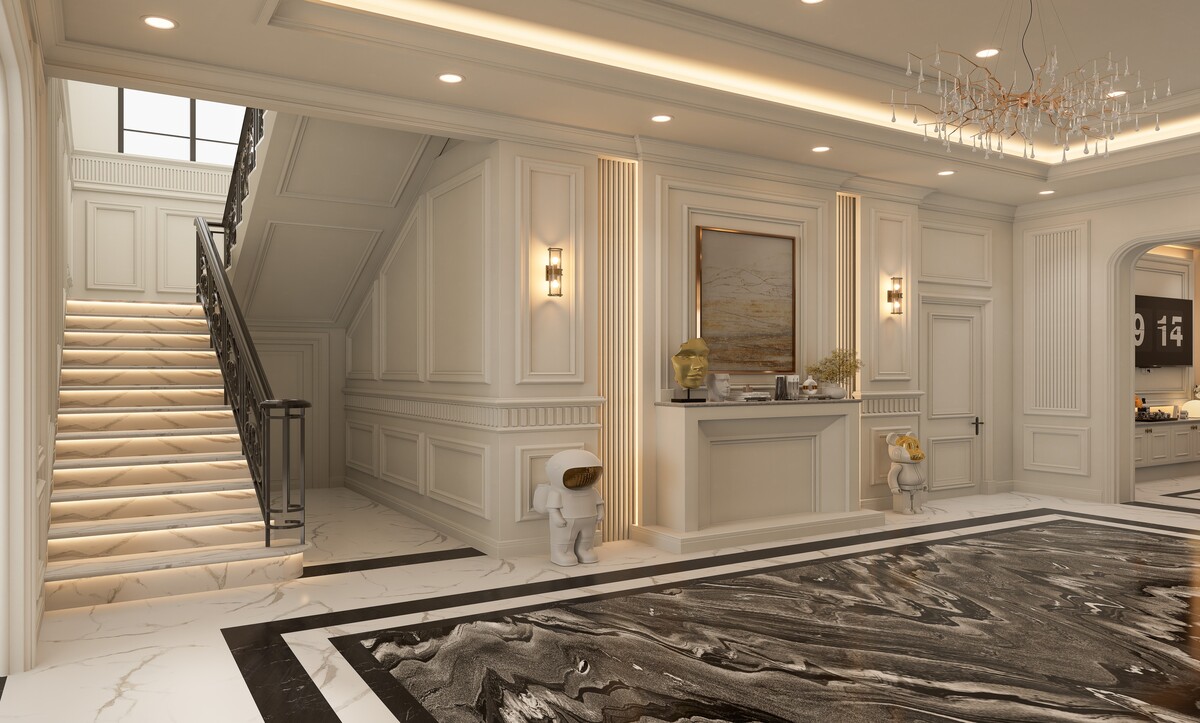
4- Care, sealing and daily use
Since Carrara is calcite-rich, it is porous and vulnerable to etching from acids such as lemon juice or vinegar. Good habits matter. The Natural Stone Institute advises neutral pH cleaners, soft cloths and quick blotting of spills. Avoid acidic or abrasive products.
Sealing helps with stain resistance. Home guidance updated in 2025 recommends sealing on install then re-sealing every six to twelve months, with a simple water drop test as your cue. If water darkens the stone within about 30 minutes, it is time to re-seal. For deep stains or heavy etching, bring in a pro refinisher.
Detailed brochures from the Marble Institute outline safe methods and ASTM-aligned cleaning practices. If you are building a cleaning kit, think pH-neutral stone soap, microfiber cloths and coasters under acidic drinks.
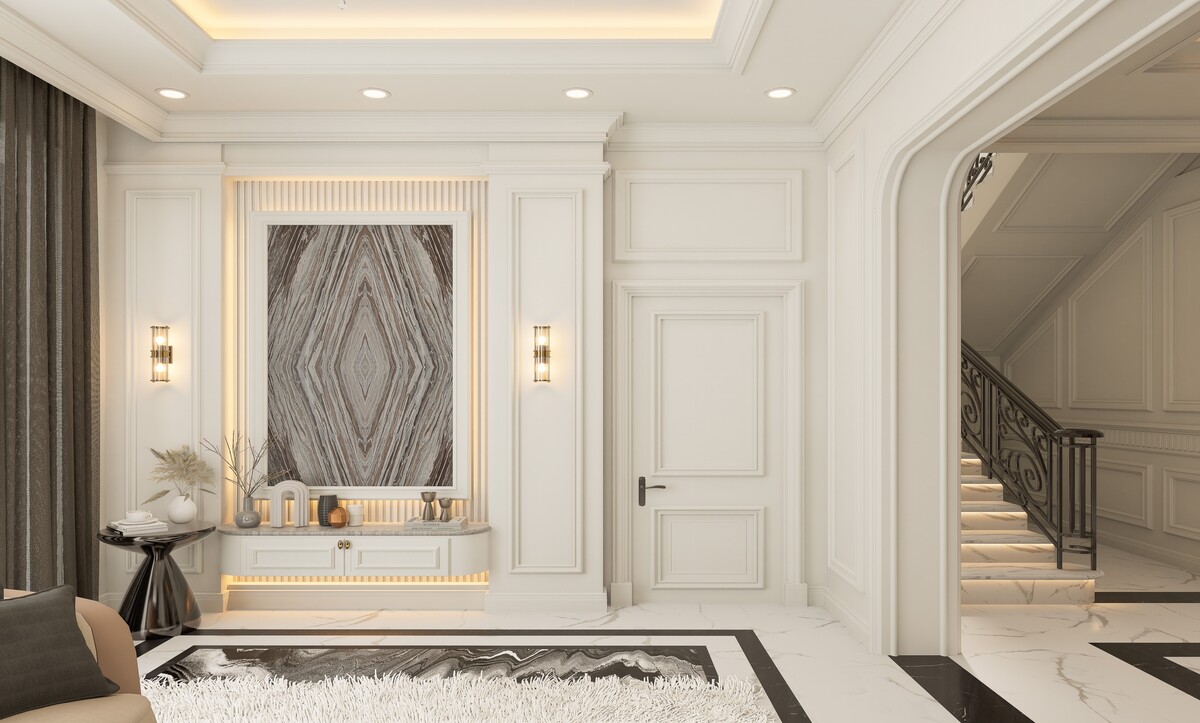
5- Why Carrara endures in design
Three qualities keep designers and homeowners coming back:
- Light. The fine calcite matrix scatters light in a soft way. Honed or polished, Carrara brightens a room without glare.
- History. From Trajan’s Column to modern kitchens, the same quarries keep supplying projects that span eras.
- Versatility. It reads classical in slabs and crisp in large matte tiles. You can set it against walnut, oak, brushed nickel, unlacquered brass or blackened steel with equal confidence. (Pick one metal and repeat it across hardware and lighting for cohesion.)
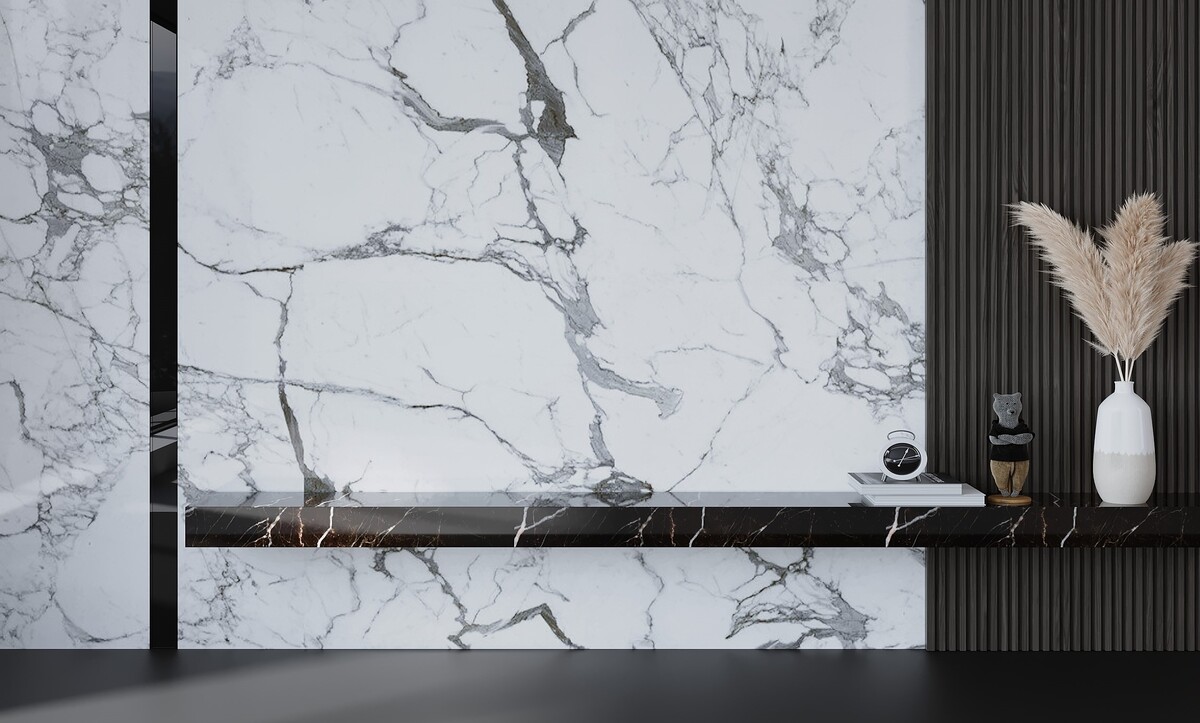
6- How to use Carrara marble in modern homes
Kitchens
- Honed countertops with eased edges. Honed surfaces mute small etches and soften reflections. Pair with a 20 mm or 30 mm thickness and a tight 2 to 3 mm shadow line at cabinetry for a clean read.
- Waterfall islands. Continue veining down both sides. Bookmatch if your slab permits. A straight 90-degree return keeps it modern.
- Backsplash options. Full-height slab backsplashes look minimal and reduce grout. If you prefer tile, try 75×300 mm subway in a stacked pattern rather than offset for a contemporary grid.
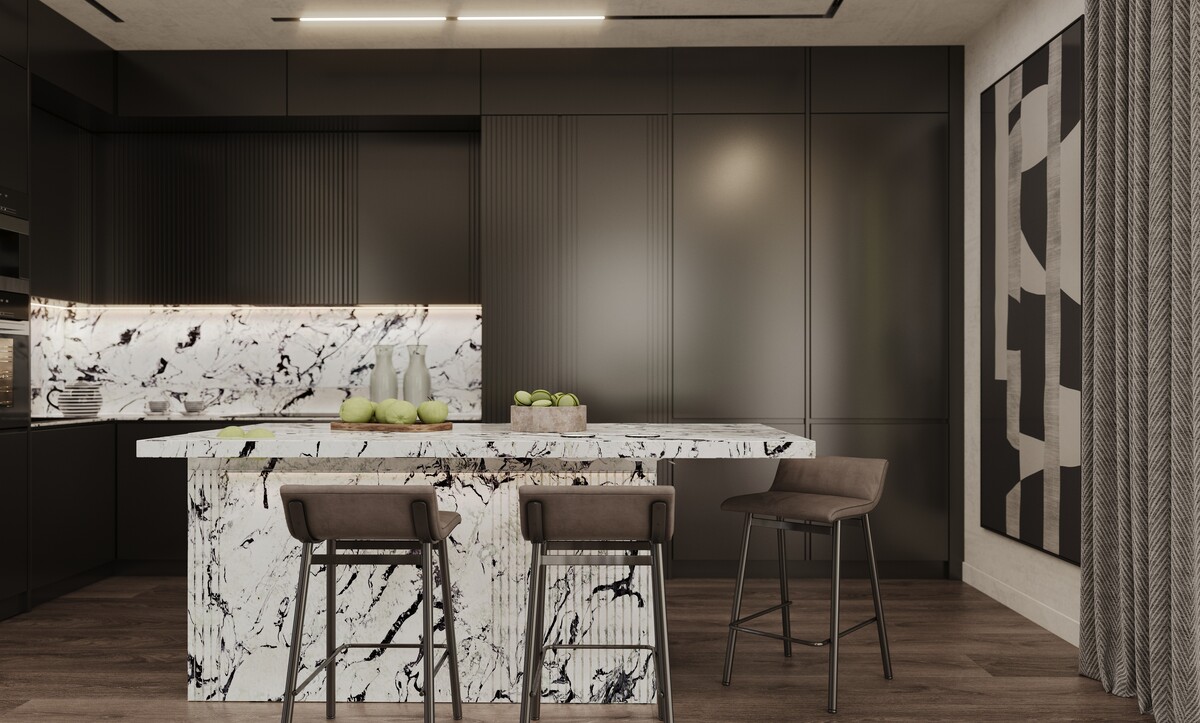
Daily use tips: cut on boards, keep citrus on trays and wipe oils promptly. Re-seal on schedule and expect a lived-in patina over time, which many owners consider part of marble’s honest appeal.
Bathrooms
- Large-format floor tiles. 600×600 or 600×1200 mm tiles reduce grout lines and make smaller rooms feel larger.
- Vertical slab shower walls. Fewer joints, easier squeegee routine. Combine with matte black fixtures for contrast or warm brass for a quiet glow.
- Floating vanities with thin tops. A 20 mm honed top with a negative reveal reads light and tailored without fuss.
- Ventilate well and squeegee glass and stone after showers to limit mineral buildup. Use neutral cleaners only.
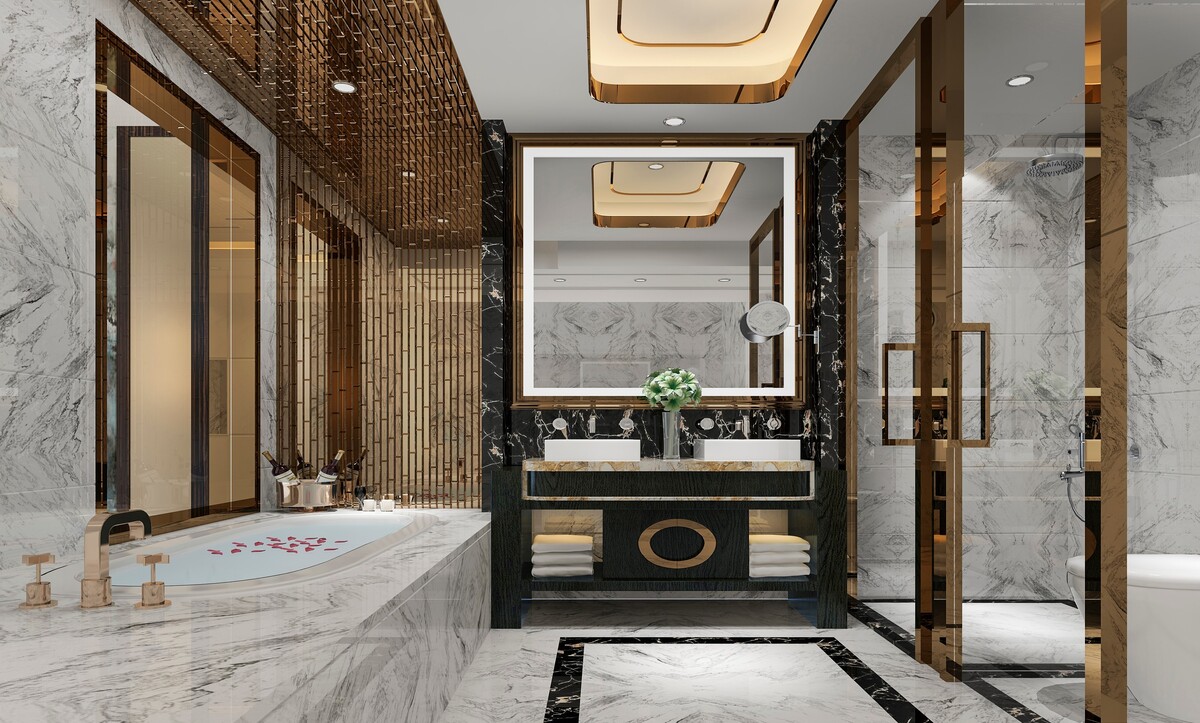
Living areas
- Fireplace surrounds. A simple mitered frame around a flush firebox in honed Carrara delivers presence without heavy ornament.
- Coffee tables and consoles. Powder-coated steel bases under thin marble tops give you a durable accent that repeats the stone elsewhere in the home.
- Stair treads or landings. Use honed finish and subtle pencil round. Combine with oak or ash for warmth.
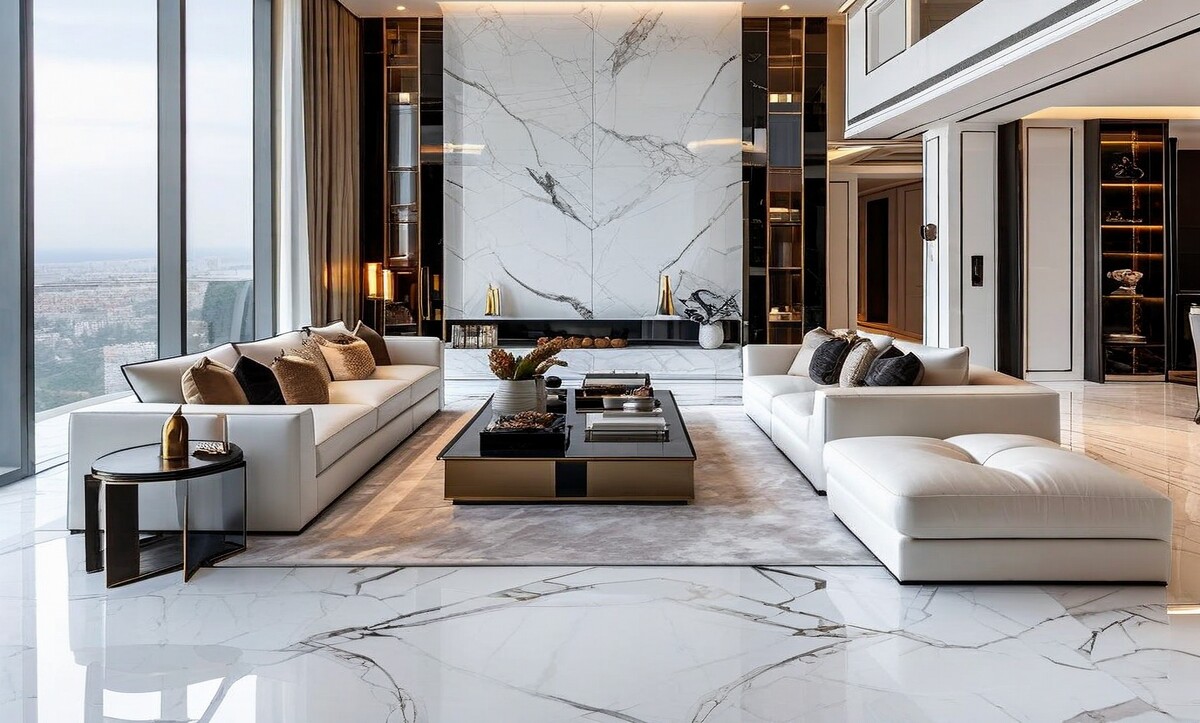
Walls and feature moments
- Bookmatched panels. Two consecutive slabs opened like a book create a centreline pattern. Keep millwork and lighting simple so the veining carries the scene.
- Niches and ledges. A 20 mm stone ledge under a window or in a shower niche gives you a crisp, durable detail.
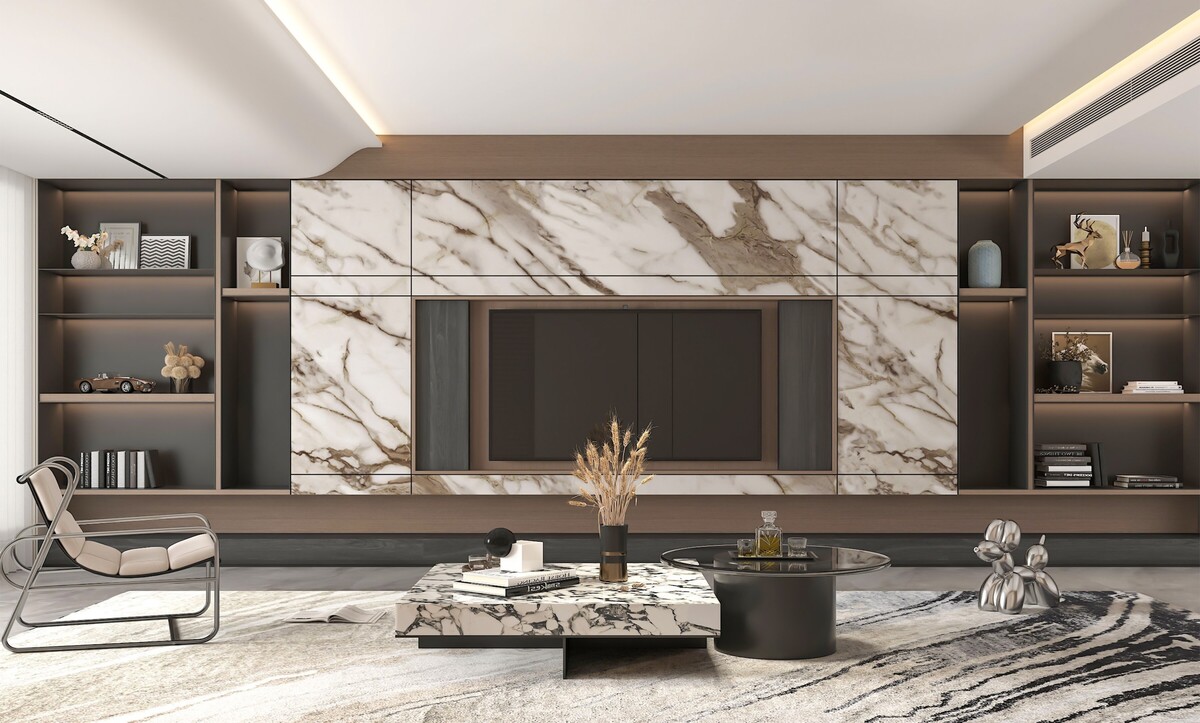
Finishes and edges that work now
- Honed for kitchens and baths that see daily use.
- Polished when you want stronger light bounce on feature walls or formal fireplaces.
- Leathered for grip on floors or a tactile island top that hides fingerprints.
- Edge profiles: eased, pencil round or micro-bevel. Ornate edges fight the stone’s natural clarity.
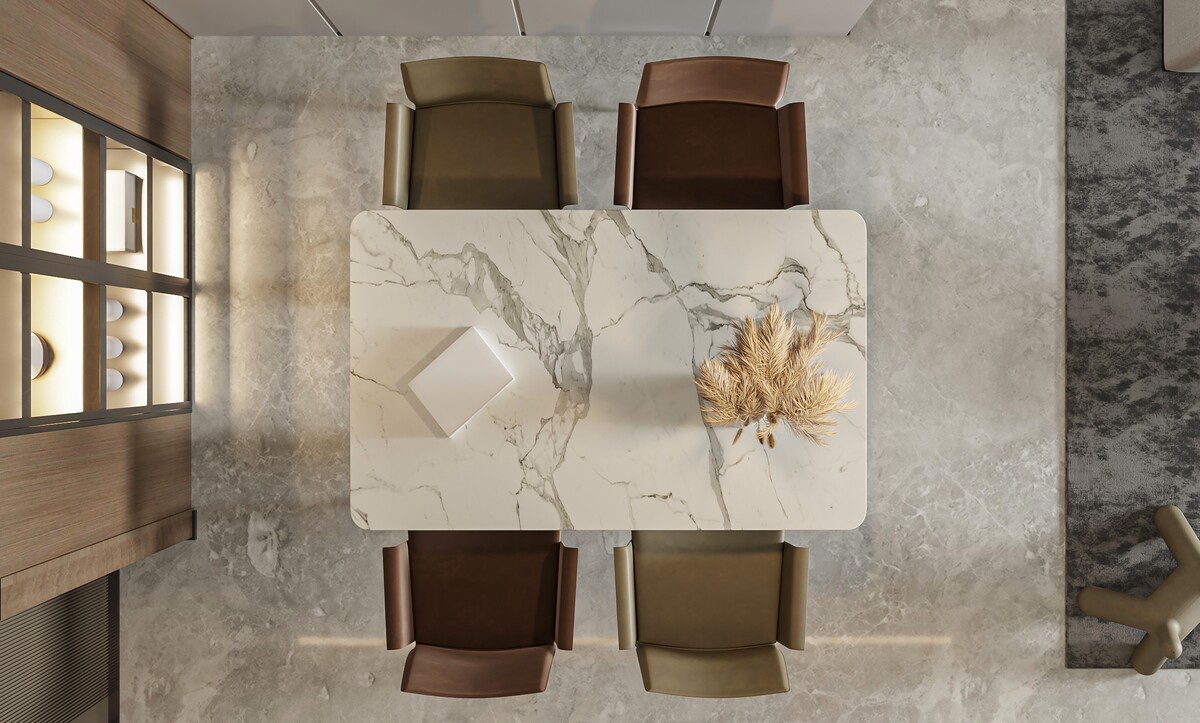
Pairing with colours and materials
- Wood: rift white oak, walnut or smoked oak deliver warmth against Carrara’s cool base.
- Metals: brushed nickel and unlacquered brass both works. Pick one and repeat.
- Paint: soft whites with a neutral base, blue-grays that echo the veining or muted greens for contrast.
- Floors: if not marble, try light oak planks for continuity.
Layout and veining
Slab selection is a design step. Photograph your slabs, mark the island and backsplash cuts, then decide how veining will flow across seams. Ask the fabricator for a digital layout before cutting so you can orient key lines and avoid abrupt bookends. This is where the difference between C and CD grades becomes visible.
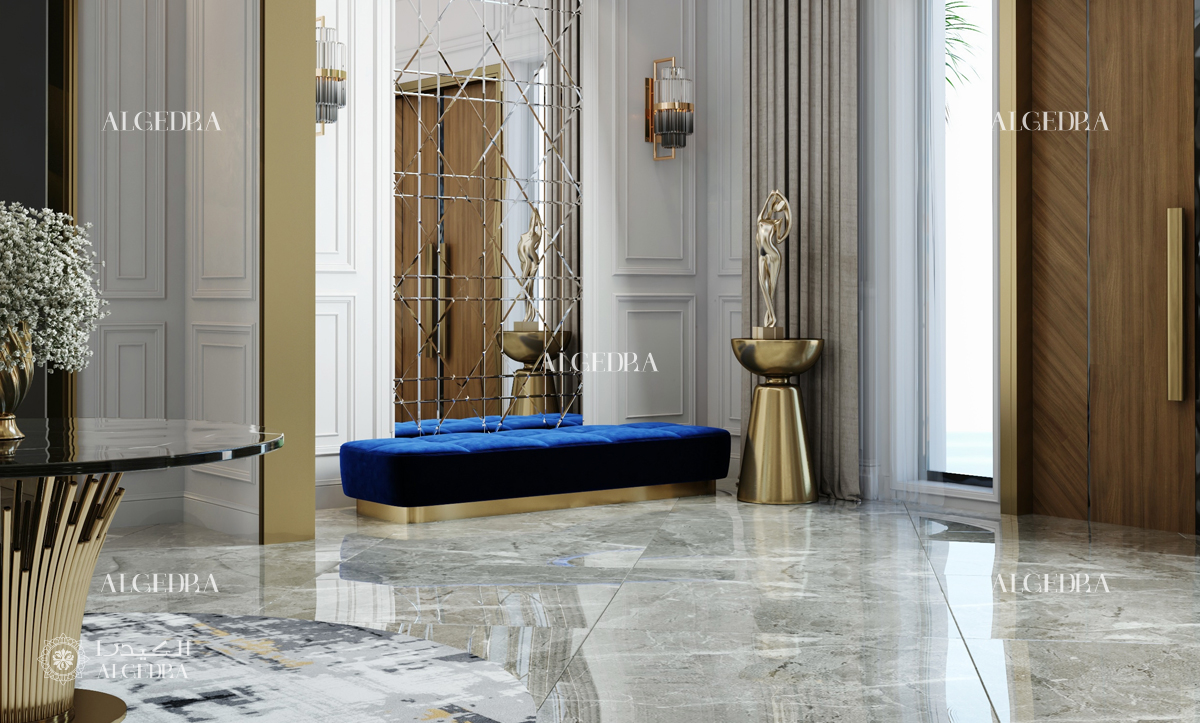
7- Installation notes that save headaches
- Substrate. For large panels, drywall must be flat within tight tolerances. For floors, confirm deflection limits and use crack isolation membranes where needed.
- Seams. Keep seams away from high-splash zones if possible. Where seams are required, match veining and keep joints tight.
- Sinks. For undermounts, reinforce cutouts and specify a drip edge or very slight negative reveal so water runs into the sink rather than under the stone.
- Heat. Trivets on counters. Thermal shock studies show carbonate stones can change under extreme heat swings. Daily cooking is fine, but direct hot pots on a thin top are a poor habit.
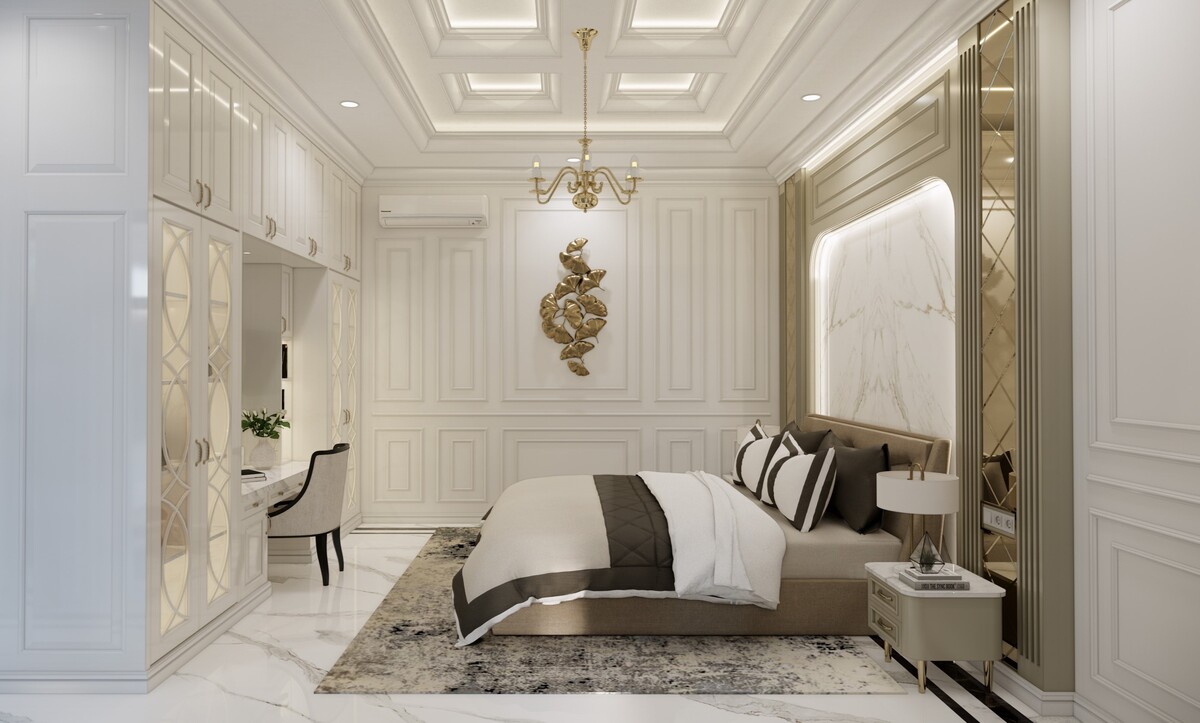
8- A short timeline
- Roman era. Luna marble from Carrara used in civic projects and victory monuments.
- Renaissance. Sculpture workshops across Tuscany return to Carrara for clean white blocks. Michelangelo’s quarry trips become part of the lore.
- Modern period. The district becomes a global supplier with rail and port links, attracting photographers and journalists for the stark terraced landscapes and the story of labour and stone.
- Today. The conversation expands to include protected habitats, local jobs and responsible extraction. Buyers weigh finish, maintenance and provenance along with price.
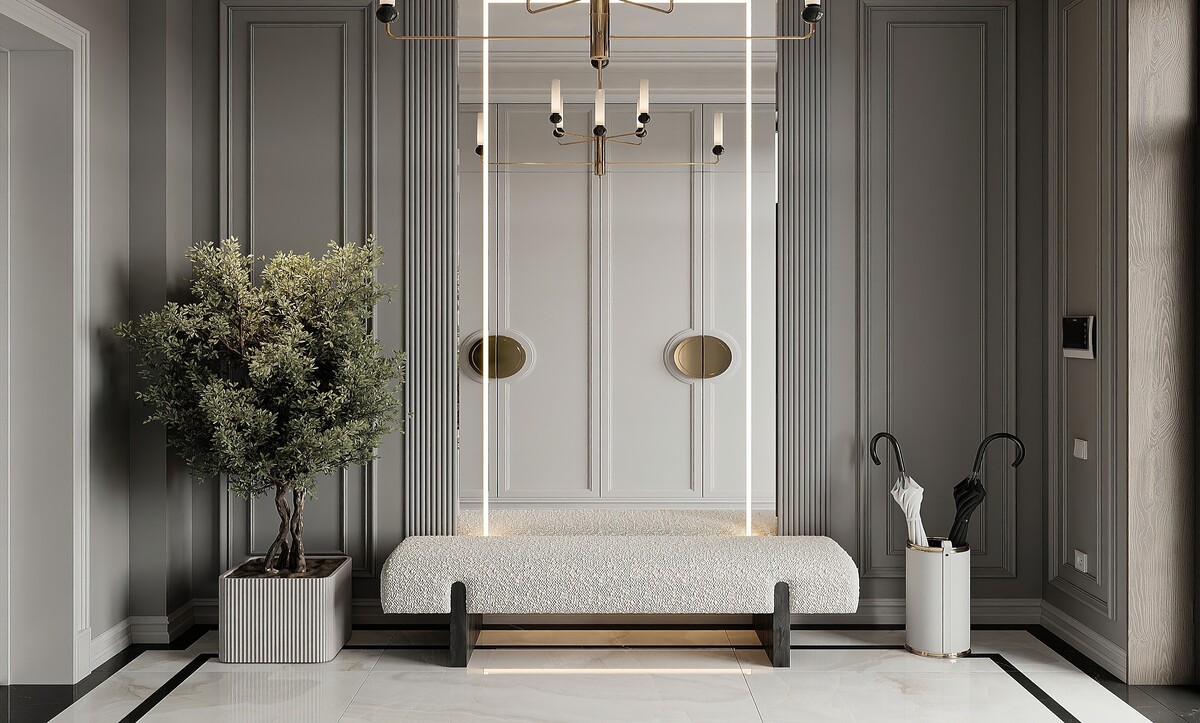
9- Pros and trade-offs at a glance
Pros
- Timeless look that suits both classic and stripped-down interiors
- Cool underfoot which is pleasant in warm climates
- Can be refinished after years of wear
Trade-offs
- Etching and staining are real risks without good habits
- Needs periodic sealing and gentle cleaners
- Slab selection and layout require attention
For many homeowners the patina is part of the charm. If you want a surface that never changes, choose a quartzite or porcelain look-alike. If you like honest wear, Carrara rewards you with depth and light.
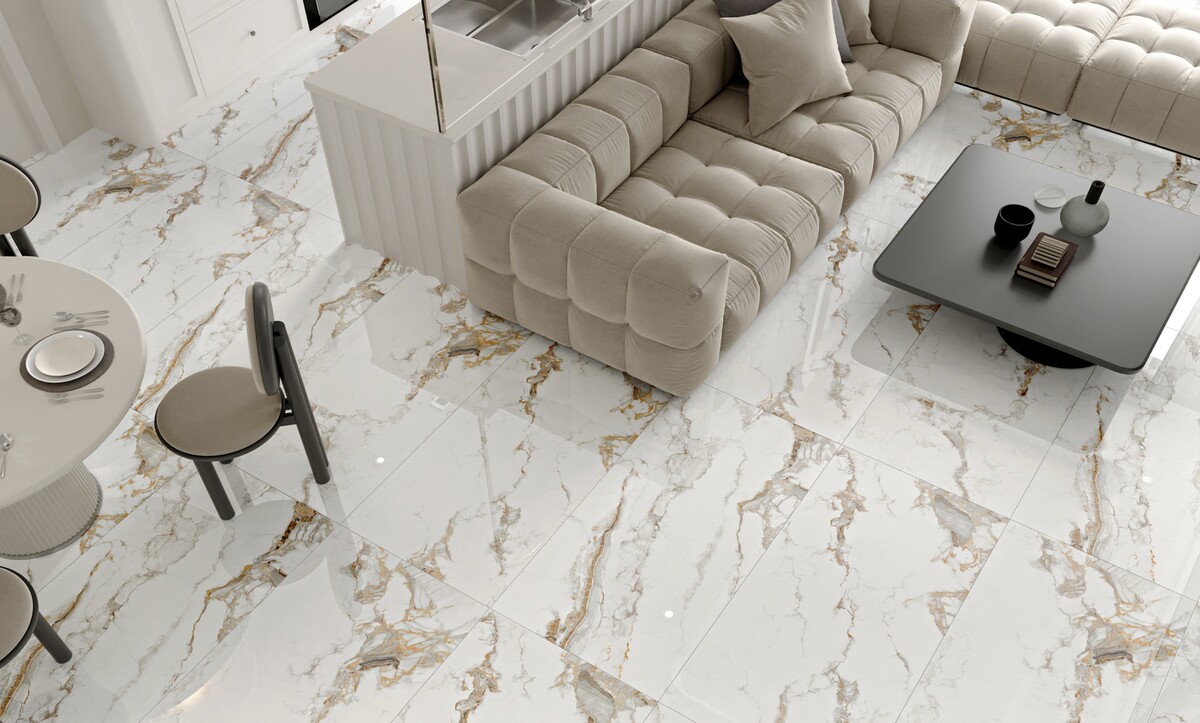
Frequently asked questions
1) Is Carrara marble suitable for a busy kitchen?
Yes, with eyes open. Choose a honed finish, commit to coasters and boards and plan for routine sealing. Expect a soft patina over time rather than a flawless surface.
2) How do Carrara C and CD grades differ?
C reads whiter with finer veining. CD shows more gray tone and movement. C tends to cost more. Always review current lots from your supplier since grading is commercial and appearance varies.
3) Will sealing stop etching?
Sealers slow staining by reducing absorption. They do not stop acid etching because etching is a surface reaction with calcite. Use neutral cleaners and wipe spills quickly.
4) What finish hides wear best?
Honed. It diffuses light so small marks read less. Leathered can also be forgiving on islands and floors. Polished shows etches sooner.
5) Is Carrara an ethical choice?
Carrara supports skilled work and a long craft community, yet quarrying raises environmental and civic questions in the Apuan Alps. Read current reporting, ask suppliers about waste handling, water controls and sourcing. Then decide according to your values.
Ready to build with Carrara
If you want Carrara in your home in Istanbul, Turkey and Europe or the wider MENA region, Algedra can help you pick the right grade, plan layouts and finishes, coordinate fabrication and deliver a room that ages well.
Talk to Algedra
- Brief us on your space and how you live
- We shortlist slabs and finishes with you
- You get precise drawings and a maintenance plan from day one
Contact Algedra today to start your project.